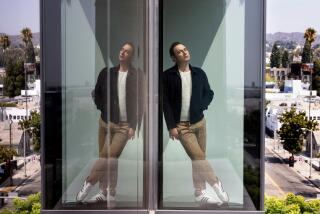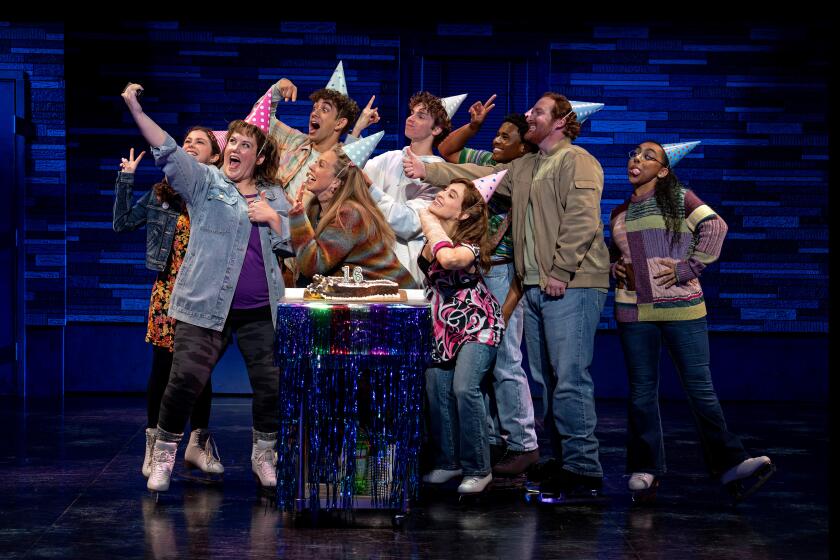Drawn by Art of Surreal : Research: Laguna museum curator writing for an anthology presents preliminary notes on the subject in Newport Beach.
Scholars still are reconstructing the little-documented history of modern art in California, says curator Susan Anderson, who’s inching the effort forward with research on a movement that fascinates her: Surrealism of the ‘30s and ‘40s.
“I’ve tried to ask myself . . . what direction was Surrealism going in California, and what kind of legacy did it leave?” Anderson said.
Anderson, Laguna Art Museum’s curator of exhibitions, is writing about the subject for a Smithsonian Institution anthology on California modernism to be published by next year. Tuesday, she presented her preliminary notes at the Newport Harbor Art Museum, in conjunction with an exhibit there by seminal surrealist Max Ernst.
Lorser Feitelson, a greatly influential Southern California modernist pioneer, “organized the (country’s) first response to European Surrealism,” founding Post-Surrealism with his wife, Helen Lundeberg, in 1934, Anderson said.
“Unlike European Surrealism, there was nothing left to chance in (Feitelson and Lundeberg’s) paintings,” Anderson said. They and a handful of like-minded contemporaries “wished the viewer to rationally process the objects carefully selected” for their tableaux.
Anderson said that Feitelson’s meditative “Genesis 1” (1934), for instance, asks viewers to contemplate “inter-relationships between levels of existence” through such analogous symbols of life force as an avocado seed, a woman’s navel, an egg and a glowing, planetary orb.
Lundeberg additionally strived to convey a sense of timelessness, Anderson continued. In “Double Portrait of the Artist in Time” (1935), she depicts herself as a 2-year-old child and as an adult, the images connected by a looming shadow, the hands on a clock indicating the child’s age.
Another Post-Surrealist active in Southern California was Knud Merrild, who immigrated to the United States from Denmark in 1922. He pooled and dripped house paint onto wet surfaces, then tipped the surfaces to create various effects. Jackson Pollock came out with his renowned drip paintings five years later, Anderson said.
Ernst, Fernand Leger, Marc Chagall, Salvador Dali and Man Ray were among several leading European Surrealists who passed through or settled in California after fleeing the outbreak of World War II, but Anderson said their legacy is unclear.
Ernst and Man Ray, for example, probably had little impact--though Los Angeles seemed to have left its mark on them.
Ernst visited the area at least three times, marrying artist Dorothea Tanning in Hollywood in 1946 and having a retrospective at Beverly Hills’ (now long gone) Copley Gallery in 1949. Twenty years later, he created “Mickey’s Ascension” which, Anderson said, “epitomizes his fascination” with popular and American Indian culture.
The assemblage, juxtaposing Walt Disney’s round-eared rodent with a Zuni kachina figure, appears to “be a statement about the ascendancy of popular culture and mainstream art forms over more traditional art and wisdom,” Anderson said.
Man Ray, considered the American founder of Dada, lived in Los Angeles from 1940 to 1951. During that time, he painted “Night Sun--Abandoned Playground”: a white beach, a sunset over the ocean, a Cypress tree--all typical California images--appear in the brightly toned work that, Anderson said, looks somewhat like a stage set.
She added that Man Ray, reminiscing once about life in the land of dreams and fantasy, said “there was more surrealism rampant in Hollywood than all the Surrealists could invent in a lifetime.”
* “Max Ernst: The Sculpture” continues through Sept. 6 at the Newport Harbor Art Museum, 850 San Clemente Drive, Newport Beach. 10 a.m. to 5 p.m. Tuesdays through Sundays (Fridays until 8 p.m.). (714) 759-1122.
More to Read
The biggest entertainment stories
Get our big stories about Hollywood, film, television, music, arts, culture and more right in your inbox as soon as they publish.
You may occasionally receive promotional content from the Los Angeles Times.










